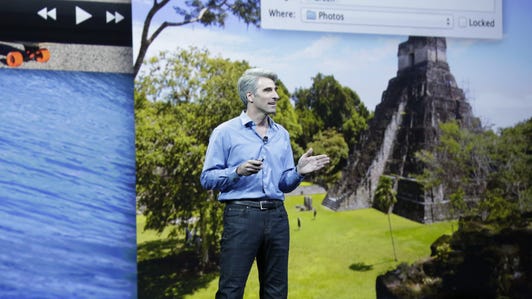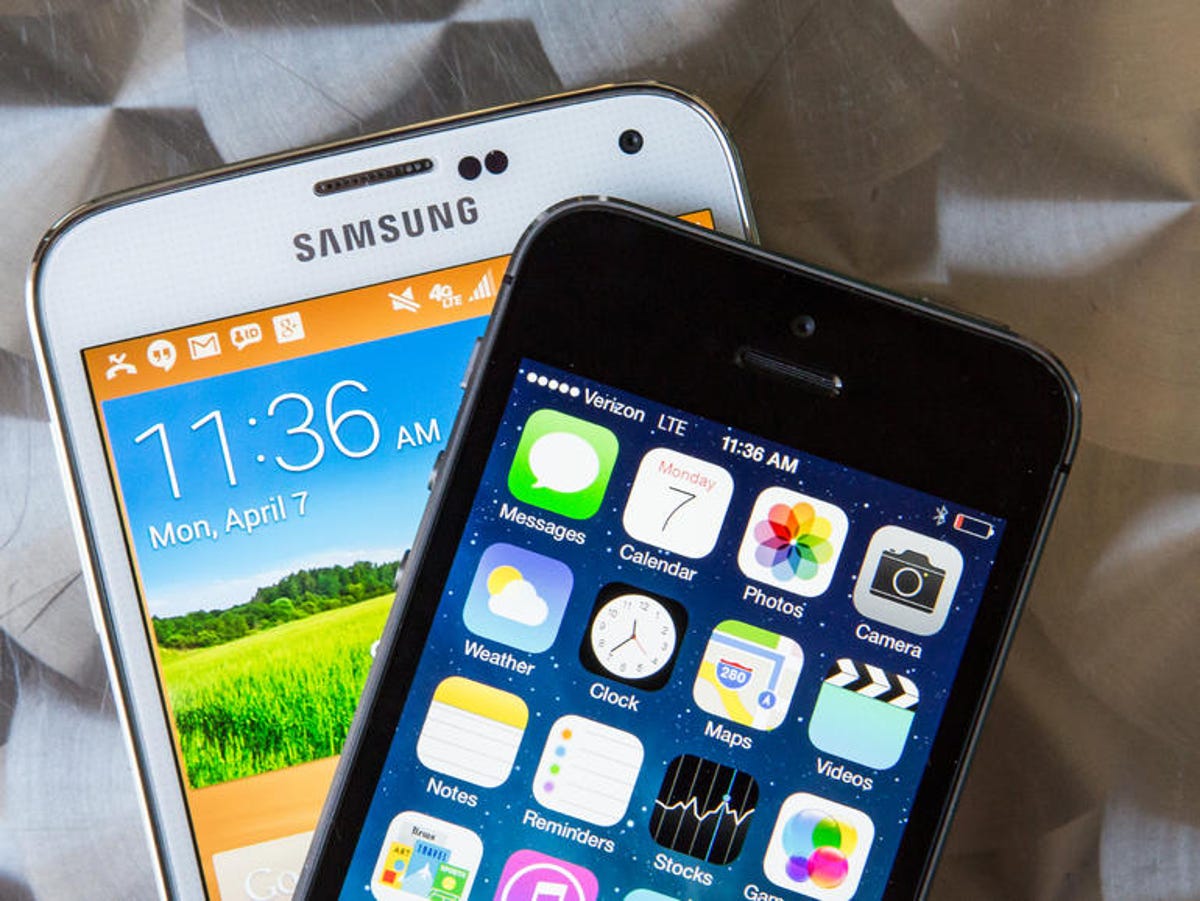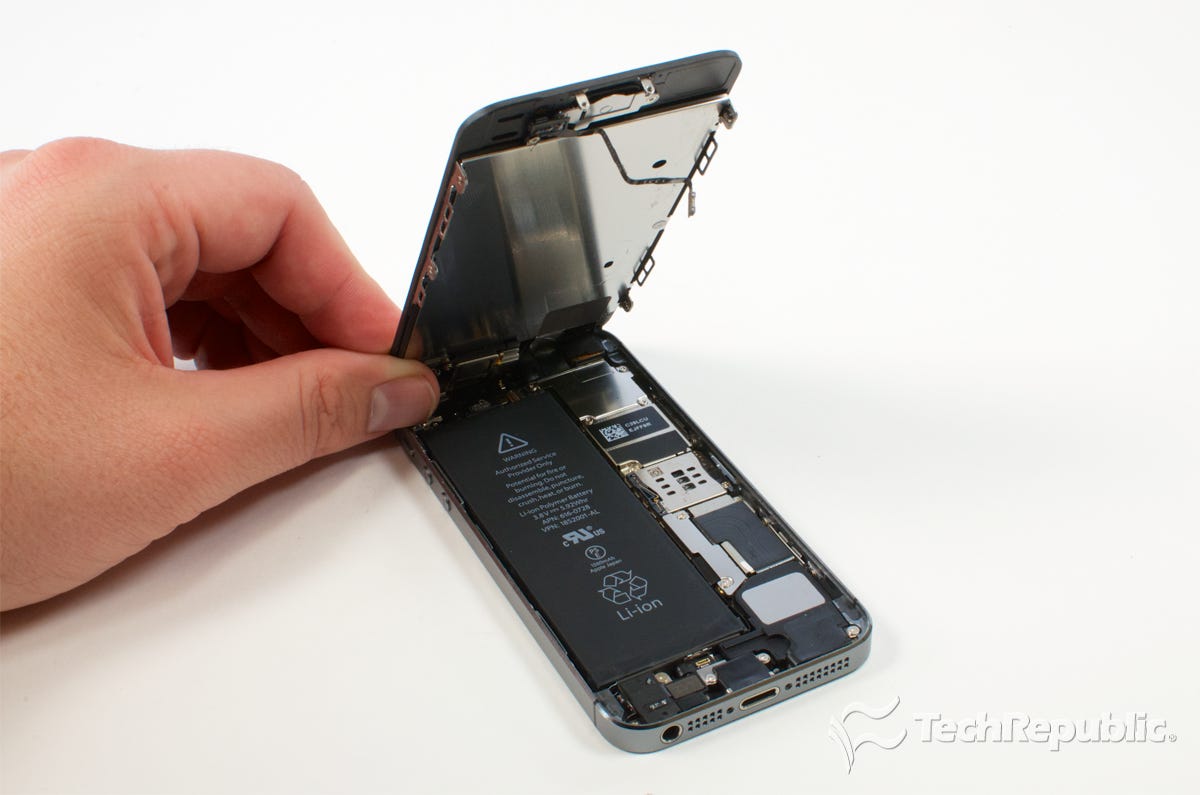
Sarah Tew/CNET
Apple’s iPhone 6 may be one of the worst-kept secrets — and most highly anticipated devices — of the year.
Since introducing the iPhone in 2007, Apple has added a new model every year, with seven generations (covering eight models) so far. For the past three years, Apple CEO Tim Cook has unveiled the new design in the fall, which is why company watchers expect this year’s update — dubbed the iPhone 6 because it follows last year’s iPhone 5S and iPhone 5C — to make its debut in September.
The fact that Apple hosts one big phone event a year, while rivals seem to launch new devices every month, makes each iPhone launch a big deal. That’s especially true given that the smartphone is Apple’s biggest moneymaker, accounting for more than half of sales and about 70 percent of profit, according to analysts.
See also
- Apple sets Sept. 9 for new iPhone debut, report says
- Apple posts solid Q3 profit, but iPhone sales don’t wow
- WWDC set the stage. Now Apple needs to deliver
- CNET’s iPhone 6 rumor roundup
Expectations are particularly high for the iPhone 6, which is expected to be a “major” update to the smartphone. Apple has followed a pattern of introducing big new designs every other year, with appealing but modest updates — like the 5S and 5C — in between. But Apple investors and boosters are now ready for revolutionary, rather than evolutionary products, and Cook has said he’ll deliver compelling new products in the second half of this year.
So what Cook and his team, led by design chief Jony Ive, put into the iPhone 6 matters. The company can’t afford to lose defectors to archrival Samsung or have Apple users wait another year before they upgrade. The iPhone’s worldwide smartphone market share plummeted from a peak of 23 percent in fourth quarter of 2011 to 12 percent in the second quarter of 2014, according to market researcher IDC. That puts it in second place behind Samsung.
Though the South Korean giant has battled Apple over patents in the courts and is feeling the heat from Chinese vendors including Xiaomi, Huawei, and Lenovo in fast-growing emerging markets, Samsung still ships more than twice as many smartphones as Apple each quarter.
It’s far from game over for Apple. In the latest quarter, ended June 28, consumers bought 35.2 million iPhones even though Apple’s latest devices — the 5S, which added a new touch fingerprint security system and faster chip, and the lower-cost, plastic encased 5C — were nearly nine months old.
The iPhone 6 just may be one of the largest product launches in Apple’s 38-year history. Apple reportedly has asked manufacturing partners to produce about 70 million to 80 million units of its larger screen iPhones by December 30, which is about 30 percent to 40 percent more iPhones than it ordered for its initial run of last year’s iPhone 5S and 5C.
Apple iOS 8 at WWDC 2014 (pictures)






+14 more
Analysts such as RBC Capital Markets’ Amit Daryanani say Apple could sell as many as 80 million models of the iPhone 6 by the end of the year, but the more likely amount is closer to 65 million — still more than ever before.
“This will be the primary product that will drive [Apple’s] growth in the quarter, and to be fair, probably for the next two years,” says longtime Apple analyst Tim Bajarin of Creative Strategies.
Apple declined to comment.
Apple’s design hasn’t changed much since the iPhone 4 in June 2010 — with the screen size increasing only slightly and battery life remaining steady at about 10 hours.
A few of the device’s features — notably screen size — haven’t kept up with those offered in devices powered by Android, the mobile operating system Google gives to handset and tablet makers as an alternative to Apple’s iOS.
The iPhone 6 should introduce enough new features to keep its current customers happy and maybe even tempt some away from Android. With so many rumors swirling about what the new model will and won’t have, here’s what market watchers see as the most likely.
Bigger screens
It’s all but certain that Apple in September will introduce at least one new iPhone with a larger screen than the current 4-inch design. The bet is that the iPhone 6 will most likely offer a 4.7-inch display. What’s less certain is whether Apple will also unveil a second, much bigger device that’s a hybrid between a phone and a tablet. Such a “phablet” could include a 5.5-inch screen, but some recent reports say it may not ship until 2015.
The iPhone has sported a 4-inch display for the past two generations, starting with the iPhone 5 in late 2012. The move to that size marked a big difference from the 3.5-inch screen used since the first iPhone launched. Apple initially designed its touch screen so it could be operated with one hand, and Cook — and former CEO Steve Jobs — resisted moving to a larger display partly for that reason.


CNET
But there’s no denying buyers want bigger, as healthy sales of Samsung’s Galaxy devices and the Google Nexus 5 show. And Apple knows that. In an internal presentation from April 2013, which was part of the evidence in the latest Apple v. Samsung patent trial this spring, Apple executives wrote that “consumers want what we don’t have.” The presentation also noted that the smartphone market isn’t growing as quickly as it used to, and many consumers are now seeking cheaper, larger-screen phones. (Phil Schiller, Apple’s marketing chief, was asked about the documents while on the stand and downplayed their importance.)
Launching a bigger iPhone would have significant implications for the mobile industry. In a market where phone designs and operating systems have become standardized, larger screens were one way for Android devices to stand out against the iPhone. Once Apple has bigger devices, Android makers such as Samsung and LG won’t have as much of an advantage.
“There are people out there who are currently using an Android device simply because the iPhone doesn’t offer an option in the screen size they want to use,” JackDaw Research analyst Jan Dawson said. “A phone in the 4.7-inch range will win many people back from Android — and many of them from Samsung.”
Samsung, Apple’s biggest rival in smartphones, pioneered the phablet category, and it has counted on the popularity of the devices to attract more customers. Samsung claimed during the patent-infringement trials against Apple that one of the main reason people buy Samsung devices is for their bigger screens. If that’s no longer a differentiator, Samsung’s sales could suffer.
Stefano Camera, a 35-year-old from Milan who visited the Apple Store on Fifth Avenue in New York while on vacation earlier this month, has considered switching to a Samsung smartphone to get a larger display. But he’d stick with the iPhone if Apple came out with a bigger screen.
Some recent speculation has discussed the possibility that Apple could increase the starting price for its bigger screen iPhones to make up for the higher costs. The iPhone 5S sells at a starting price of $199 in the US, when purchased along with a two-year contract, and $649 for an unsubsidized phone. The iPhone 6 could cost $100 more, say some analysts. “I’m just concerned about the price,” Camera said.


Now playing:
Watch this:
Inside Scoop: Highlights from WWDC’s keynote
4:39
Other questions are whether Apple will introduce another 4-inch iPhone to please buyers who want smaller screens. What happens to the iPhone 5C line is another unknown. Apple a year ago introduced two new iPhones for the first time — the high-end 5S and the lower priced, more colorful 5C. But the 5C, priced starting at $99 with a two-year contract, didn’t sell well, at least not initially, Cook admitted during Apple’s earnings report in January.
Some users are also concerned about whether they’ll be able to operate the bigger screen iPhones with one hand. Recent leaked photos imply Apple may enlarge the screen to 4.7 inches but keep the device small enough to easily hold by reducing the area near the home button at the bottom of the display, or by employing smaller bezels on the sides of the screen.
A survey by financial analysts at Baird Research shows “significant interest” in a larger iPhone, but 21 percent of current iPhone owners who responded to the firm’s poll said they would be less or much less interested in an iPhone with a larger screen.
“Bigger size is a turn off for me,” Hilton Weeks, an 18-year-old from Brooklyn, said outside the Apple Store on Manhattan’s Fifth Avenue. Apple shouldn’t try to keep up with Android devices, he said. “It would be the iPhone S5,” he said, playing off the name of Samsung’s flagship, the Galaxy S5.
Analyst predictions vary on what Apple will do in terms of pleasing customers wanting smaller screens, but most agree that it will keep offering smaller-screen devices, whether they’re new devices or just variations of the old (just as how the 5C essentially was the iPhone 5 in color plastic casing).
Better components
There’s little doubt Apple will update the iPhone’s components. The company is expected to include a new, Apple-designed processor as it has for all previous models. If it sticks to its historical nomenclature, the new chip will be called the A8.
The iPhone 5S’s A7 chip — the first 64-bit mobile processor on the market — was a big step forward for Apple and the entire mobile industry. It enabled the iPhone to run faster apps that can juggle large amounts of data more efficiently than the 32-bit processors common in most smartphones and tablets.
Because Apple controls its own operating system and designs its own processors, it could make sure the two were ready for 64 bit at the same time. Many Android chipmakers, such as Qualcomm, introduced 64-bit chips after Apple’s A7 processor. But Android won’t actually support the technology until Google releases the Android L operating system later this year.


Bill Detwiler/TechRepublic
Apple also could do more with sensors in the iPhone 6. A new motion co-processor introduced in the iPhone 5S last fall, called the M7, works alongside the main chip in the deivce to continuously measure motion data from the phone’s accelerometer, gyroscope, and compass without draining battery life. Apple said the M7 would enable a new generation of health and fitness apps, but so far, only a handful of apps — including Nike+ Move, DayOne, Runtastic, and Strava Run — take advantage of the chip.
It’s likely Apple will update the M7 processor to tap into more sensors or capabilities for health tracking — something that’s sure to be a key focus for Apple in the coming months and years. The company showed off its new iOS 8 HealthKit data hub, which will let consumers track health-related data, during its Worldwide Developer Conference in June. HealthKit includes a corresponding app named Health, which can be used with third-party fitness devices. Many medical institutions have already signed on as partners.
HealthKit is also expected to play a key role in Apple’s much-anticipated iWatch smartwatch, which could hit the market later this year or early next year.
Apple also should improve battery life or at least keep the level stable. And it’s likely there will be better, higher-megapixel camera in the iPhone 6 than the camera tech in the iPhone 5S.
Carrie Chen, a 20-year-old Chinese exchange student studying at the University of California, Berkeley, said she plans to ditch her Samsung Galaxy S4 for the iPhone 6 to take advantage of what she believes will be a better camera and better battery life. “I want to change my mobile phone because the camera is so bad,” she said. “And I like that [Apple’s iOS operating system] is more simple.”
Another possible addition to the iPhone 6 could be a near field communications, or NFC, chip. Such technology allows devices to transfer small amounts of data between each other. Both gadgets must contain NFC chips and must be closer than an inch to connect. Typically, NFC works by tapping the two devices together to securely exchange data, such as credit card information, train tickets, coupons, press releases, and more.
Apple iPhone 5S






+6 more
Samsung has been one of the biggest companies pushing the technology in everything from smartphones to appliances. It released several ads that show what users can do with NFC ( like sharing videos by tapping two Galaxy S3 phones together), and it also has slammed the iPhone for its lack of sharing capabilities. Still, internal documents and studies from experts in the recent Apple v. Samsung trials showed NFC isn’t one of the main factors consumers consider when buying a new phone.
Apple has long been rumored to support NFC technology, but it’s held off so far. Schiller a few years ago said Apple’s Passbook program — which stores tickets, loyalty cards, and other information — did what customers needed and worked without existing merchant payment systems.
But Apple is believed to be working on a new mobile payments system, possibly for debut with the iPhone 6.
Mobile payments is a natural progression for Apple. The company already lets hundreds of millions of iTunes users — about 800 million, as of Apple’s earnings in April — buy music, books, and apps through an iTunes account linked to their credit cards. Expanding this payment process into a digital wallet, or some other sort of mobile payment service, could be a feasible shift for the company.
Cook said in January that Apple was intrigued by the idea of mobile payments and using Apple’s Touch ID feature as part of the implementation.
Ed Anuff, a 46-year-old San Franciscan, tends to buy a new iPhone every year but skipped the 5S because it was “not that big of an upgrade.” A bigger screen will get him to upgrade, he said, but he’d also like to see mobile payments and NFC in the new device. “Here in San Francisco, all the parking meters have NFC payments,” Anuff said. “I don’t know if Apple would put it in there, but I would find that [handy]. I never have quarters.”
Apple’s use of NFC in its mobile devices could also get more retailers on board with mobile payments and could help the technology take off. But Apple already uses Bluetooth, which comes standard in devices today, for many things NFC can do.
Sapphire screens
Another rumored iPhone 6 feature — and what analysts say is the least likely — is the use of sapphire screens. Considered the third-hardest mineral, sapphire — or synthetic sapphire in the case of smartphone screens — is seen by many as a sort of holy grail for phones because it’s difficult to break and nearly scratch resistant. Proponents of the substance claim that it is stronger and tougher than Gorilla Glass, which is currently used for the iPhone screens. Gorilla Glass maker Corning disagrees.


Now playing:
Watch this:
All the latest iPhone 6 rumors
6:34
But sapphire is difficult and costly to produce. Analysts predict that Apple would have to boost the cost of the iPhone if it offered sapphire screens. And some say sapphire can’t be manufactured cheaply and in the quantity needed to meet iPhone demand. Apple could include it in some models of the phone, but it may also wait until manufacturing improves.
It also could use a sort of sapphire/glass hybrid, said Gartner analyst Van Baker. “If they figured out some way to do a hybrid or layering, that would make sense,” Baker said. “It would be much harder than Gorilla Glass but not as hard as sapphire.”
Either way, there’s almost certain to be sapphire in at least one area of the iPhone 6 — the fingerprint sensor. The iPhone 5S included the harder glass to protect both the home button (which contains the fingerprint sensor), as well as the device’s camera. Apple likely will implement sapphire crystal in the same manner in the iPhone 6.
Apple’s eventual use of sapphire would make phones that are much more damage proof. But what’s not clear is whether sapphire can help prevent cracked screens better than Gorilla Glass. Still, sapphire would be something that would set Apple’s devices apart from rivals and give it an even more premium status.
And it could stay that way for quite some time. Analysts say Apple has secured the bulk of the world’s sapphire for use in mobile devices through its $578 million investment in manufacturer GT Advanced Technology. Together, the companies opened a new facility in Mesa, Ariz., to build the screens.
Apple’s iPhone has long been the gold standard for smartphones. We’ll find out soon if that remains the case.
–Ben Fox Rubin contributed to this report.



